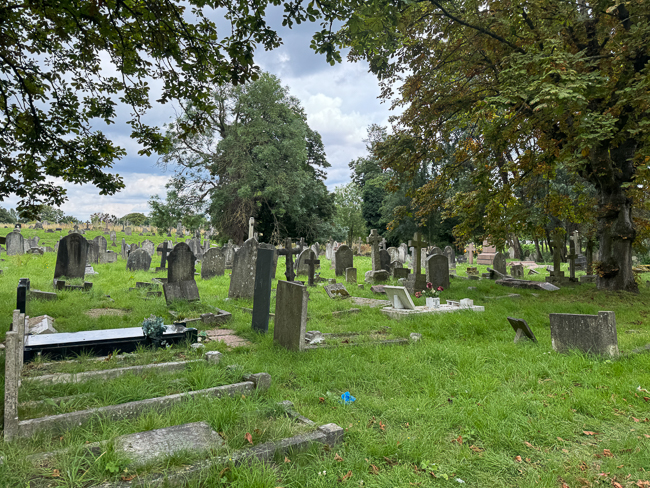July 2024
Crossbones Cemetery
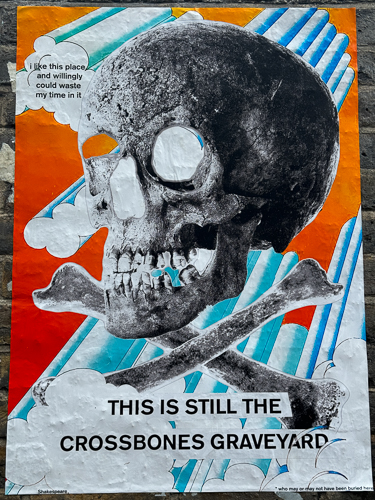
Wandering near the Tate Modern, I found this small graveyard that is only open three days a week for a few hours, and then, only if they can find volunteers. I was lucky!
Depending on what/who you read, the stories vary, but the gist is that Cross Bones is a disused post-medieval burial ground on Redcross Way. Up to 15,000 people are believed to have been buried there. It was closed in 1853.
Cross Bones is thought to have been established originally as an unconsecrated graveyard for prostitutes, or “single women”, who were known locally as “Winchester Geese” because the Bishop of Winchester licensed them to work within the Liberty of the Clink. The area lay outside the jurisdiction of the City of London and, as a consequence, became known for its brothels and theatres, as well as bull and bear baiting, activities not permitted within the City itself. By 1769, it had become a pauper’s cemetery servicing St. Saviour’s parish.
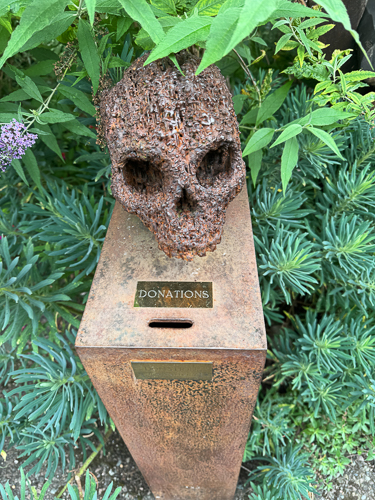
The graveyard was closed in 1853 because it was “completely overcharged with dead”, and further burials were deemed “inconsistent with a due regard for the public health and public decency”. The land was sold as a building site in 1883, prompting an objection from Lord Brabazon in November of that year in a letter to The Times, asking that it be saved from “such desecration”. The sale was declared null and void the following year under the Disused Burial Grounds Act 1884, and subsequent attempts to develop the site were opposed by local people, as was its brief use as a fairground. After removal of remains to the parish facilities in Brookwood Cemetery, Surrey, the site was built upon.
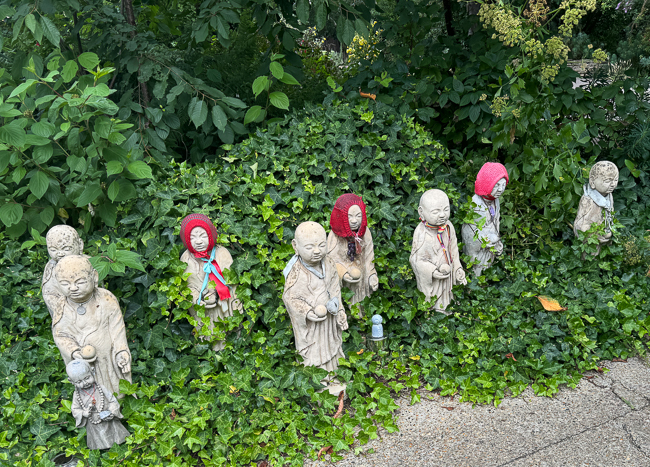
Over half of the burials in the cemetery are children. The trust was approached by parents who had lost children prenatally, asking whether an area could be set aside dedicated to children. The trust developed the area following the Japanese tradition of Mizuko kayo, as seen here.
Between 1991 and 1998, excavations were conducted on the land by the Museum of London Archaeology Service in connection with the construction of London Underground’s Jubilee line. Archaeologists found a highly overcrowded graveyard with bodies piled on top of one another. Tests showed those buried had suffered from smallpox, tuberculosis, Paget’s disease, osteoarthritis, and vitamin D deficiency. A dig in 1992 uncovered 148 graves, dating from 1800 to 1853. Over one-third of the bodies were perinatal (between 22 weeks gestation and seven days after birth), and a further 11 percent were under one year old. The adults were mostly women aged 36 and older.
Kensal Green
Kensal Green Cemetery opened in 1833 and was the first commercial cemetery in London. The increase in population and the inadequate space provided by existing cemeteries and churchyards set off a need for large cemeteries in London.
The Penny Magazine, August 1834
Campaigners for burial reform and public opinion considered the best solution would be “detached cemeteries for the metropolis”, and in 1832 Parliament passed a bill that incorporated the General Cemetery Company “for the Interment of the Dead.”
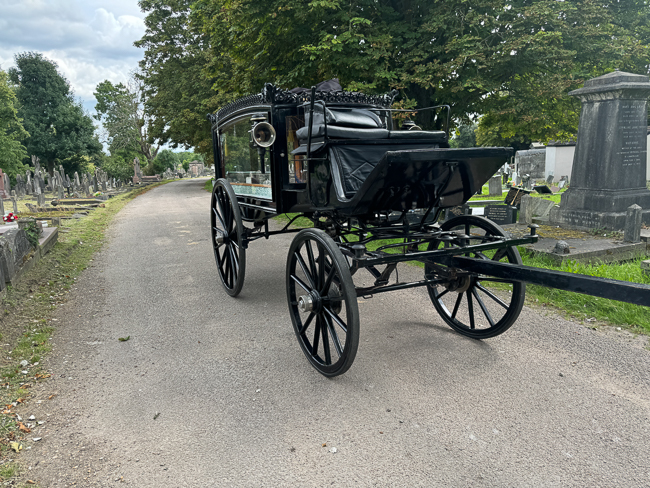
As I was arriving at Kensal Green, the hired Victorian hearse was ending its job. The woman in the photo is the second-generation owner of this stunning team of horses and a stable of Victorian hearses to match. The one shown above is a modern one with disc brakes, but they do have original older ones as well.

*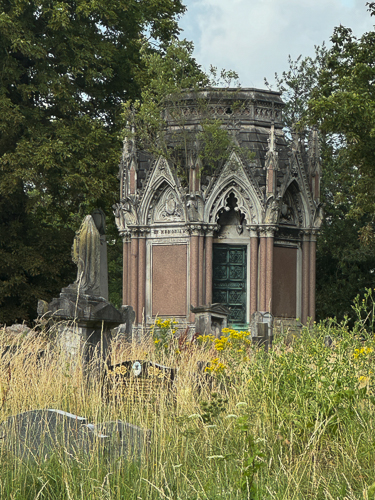
Classic Victorian Tombs
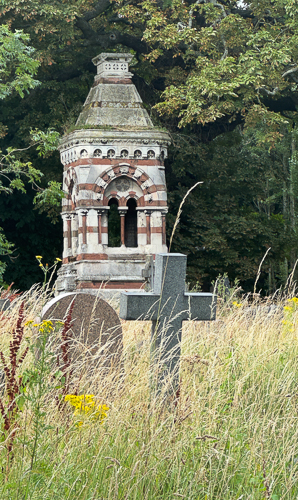
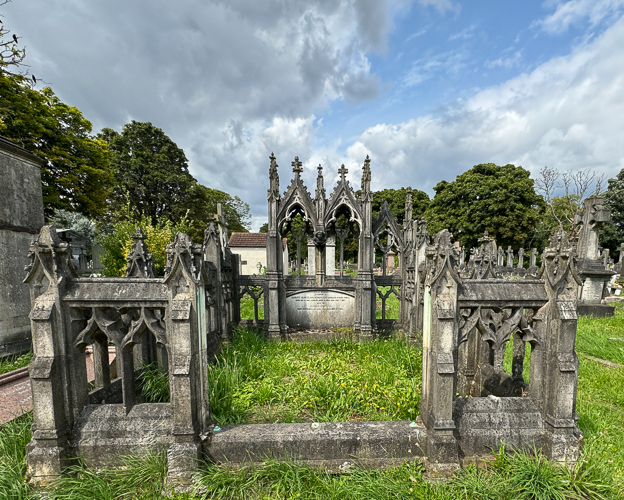
*
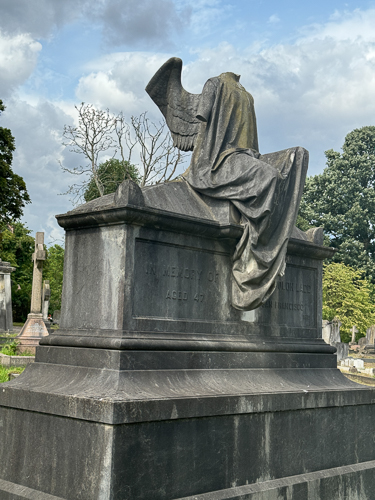
Sadly, much of the cemetery is in disrepair.
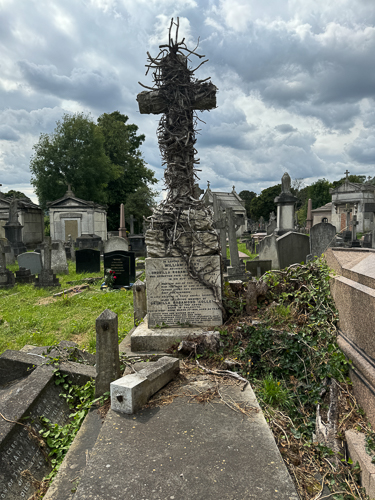 *
*
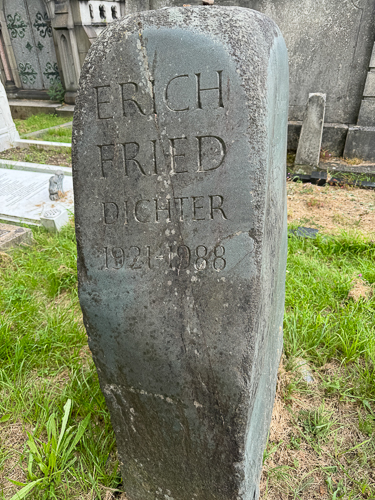
Erich Fried (6 May 1921 – 22 November 1988) was an Austrian-born poet, writer, and translator. He translated works by different English writers from English into German, most notably works by William Shakespeare.
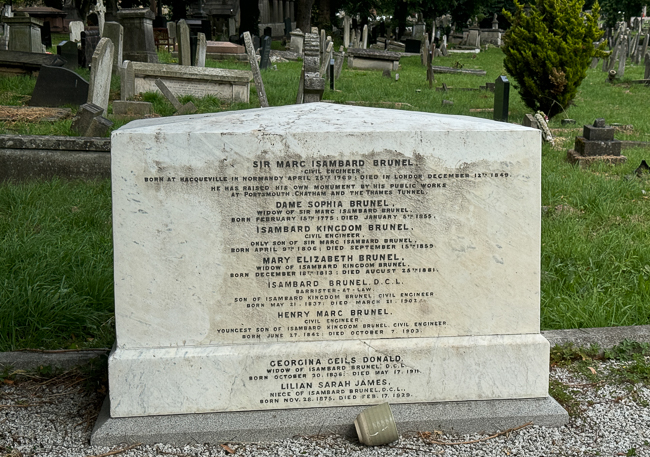
Isambard Kingdom Brunel was a British civil and mechanical engineer. He is considered “one of the most ingenious and prolific figures in engineering history,” “one of the 19th-century engineering giants,” and “one of the greatest figures of the Industrial Revolution, [who] changed the face of the English landscape with his groundbreaking designs and ingenious constructions.” Brunel built dockyards, the Great Western Railway (GWR), a series of steamships, including the first purpose-built transatlantic steamship, and numerous important bridges and tunnels throughout the UK.
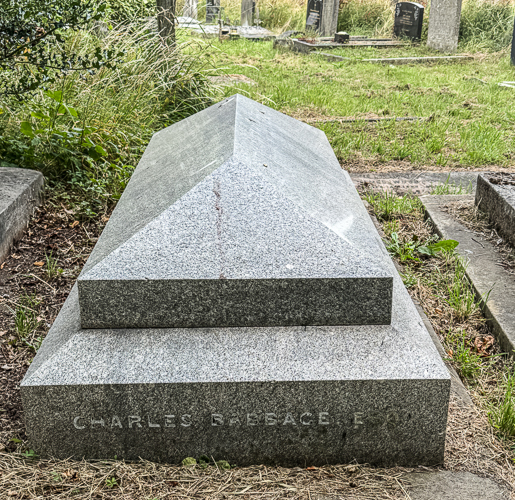
Charles Babbage was an English polymath, mathematician, philosopher, inventor, and mechanical engineer who originated the concept of a digital programmable computer.
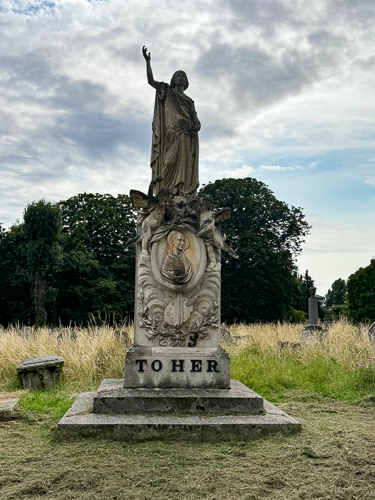
Alexis and Emma Soyer
Alexis and Emma Soyer were fascinating people. Escaping from France during the 1830 Revolution, Chef Alexis Soyer became the most celebrated cook in England. Emma achieved considerable popularity as a painter, chiefly of portraits. Born in London in 1813, she was instructed in French, Italian, and music, becoming a talented pianist. She showed two paintings at the Paris Salon in 1842 but died the same year following complications suffered in a premature childbirth brought on by a thunderstorm. Distraught, Soyer erected a monument to her at Kensal Green cemetery.
During the Irish famine in April 1847, Soyer invented a soup kitchen and was asked by the Government to go to Ireland to implement his idea. His famine soup was served to thousands of people in Dublin for free, and while in Ireland, he wrote Soyer’s Charitable Cookery, giving the proceeds of the book to various charities. In June 1848, 140 of Emma’s works were exhibited on behalf of the Spitalfields soup kitchen.
During the Crimean War, Soyer was inspired by the reports of correspondent William Howard Russell in The Times about the malnutrition of troops to improve the feeding of the army, originally at his own expense. (Later, he was paid his expenses and wages equivalent to those of a Brigadier-General. ) After a six-week journey, he reached Crimea, where he was granted complete autonomy on the soldiers’ diet and, by the use of his invention, the portable Soyer stove, managed radically to improve the way that British soldiers were fed.
Soyer wrote A Culinary Campaign as a record of his activities in Crimea. The 1854 book A Shilling Cookery for the People was a recipe book for people who could not afford elaborate kitchen utensils or large amounts of exotic ingredients.
Soyer died on August 5th, 1858, and was buried beside his wife.
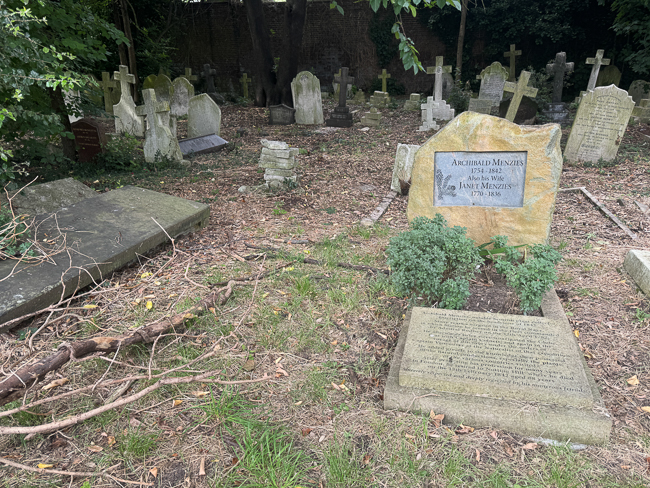
Scottish Botanist Archibald Menzies
A new grave for Scottish Botanist Archibald Menzies has been erected. I found it sad his wife was an afterthought with the stone reading: Also his wife Janet Menzies 1770-1836
The stone at the foot reads:
Archibald Menzies, notable Scottish plant collector
Inscription on the headstone of 1842:
Many years a surgeon in the Royal Navy
In which Station he served in the fleet commanded by Admiral Rodney on the 12 April 1782
He afterwards twice circumnavigated the Globe,
First with Captain Colnett and again in the
voyage of discovery under the orders of
Captain Vancouver as the Naturalist of that expedition.
He added greatly to the knowledge then possessed
Of the natural productions, especially the plants,
Of the various countries visited.
After practicing his profession for many years
In London, he retired to Notting Hill where he died
On the 15th February 1842 aged 88 years
Sincerely respected and deeply regretted by his numerous friends.
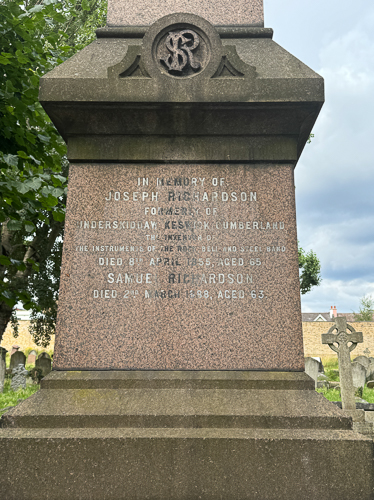
In memory of JosephRichardson
formerly of Underskidday Keswick Cumberland
The inventor of
The instrument of Rock Bell and Steel Band
Died 8th April 1855, Aged 65
Samuel Richardson
Died 2nd March 1888, Aged 63
The Rock Bell and Steel Band are collectively known as the “Musical Stones of Skiddaw” and were originally known as the “Rock Harmonicon.”

Built by Joseph Richardson, it took thirteen years to construct between 1827 and 1840. When completed, it was described by a London newspaper as being “the largest and most complete set of musical stones that was perhaps ever collected in this or any other country”. It consisted of about 60 stones ranging in length from eight feet down to three feet and covered a range of at least five octaves.
The “Rock Harmonicon” was played by three players at once, the sons of the inventor. They would sit in front in the same way as at a piano, with one playing the bass notes, the middle one playing the tenor notes, and the third playing the treble notes.
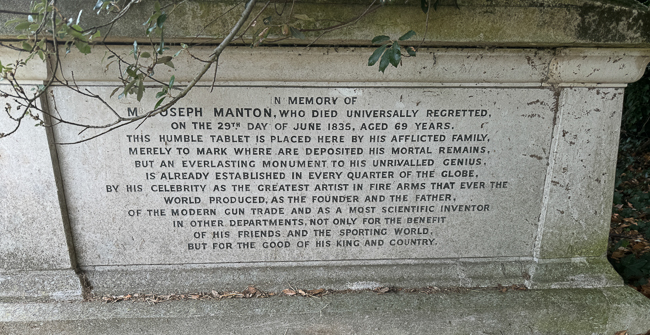
Joseph Manton (April 1766 – June 1835) was a British gunsmith. He innovated sport shooting, improved weapon quality, and paved the way for the modern artillery shell.
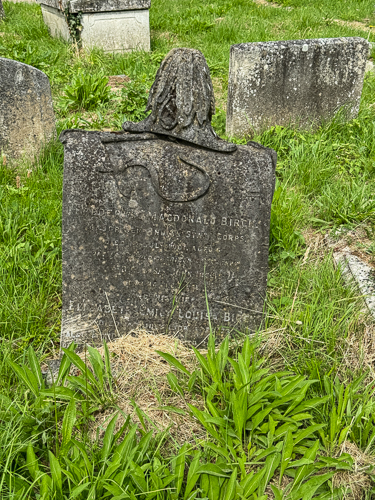
*